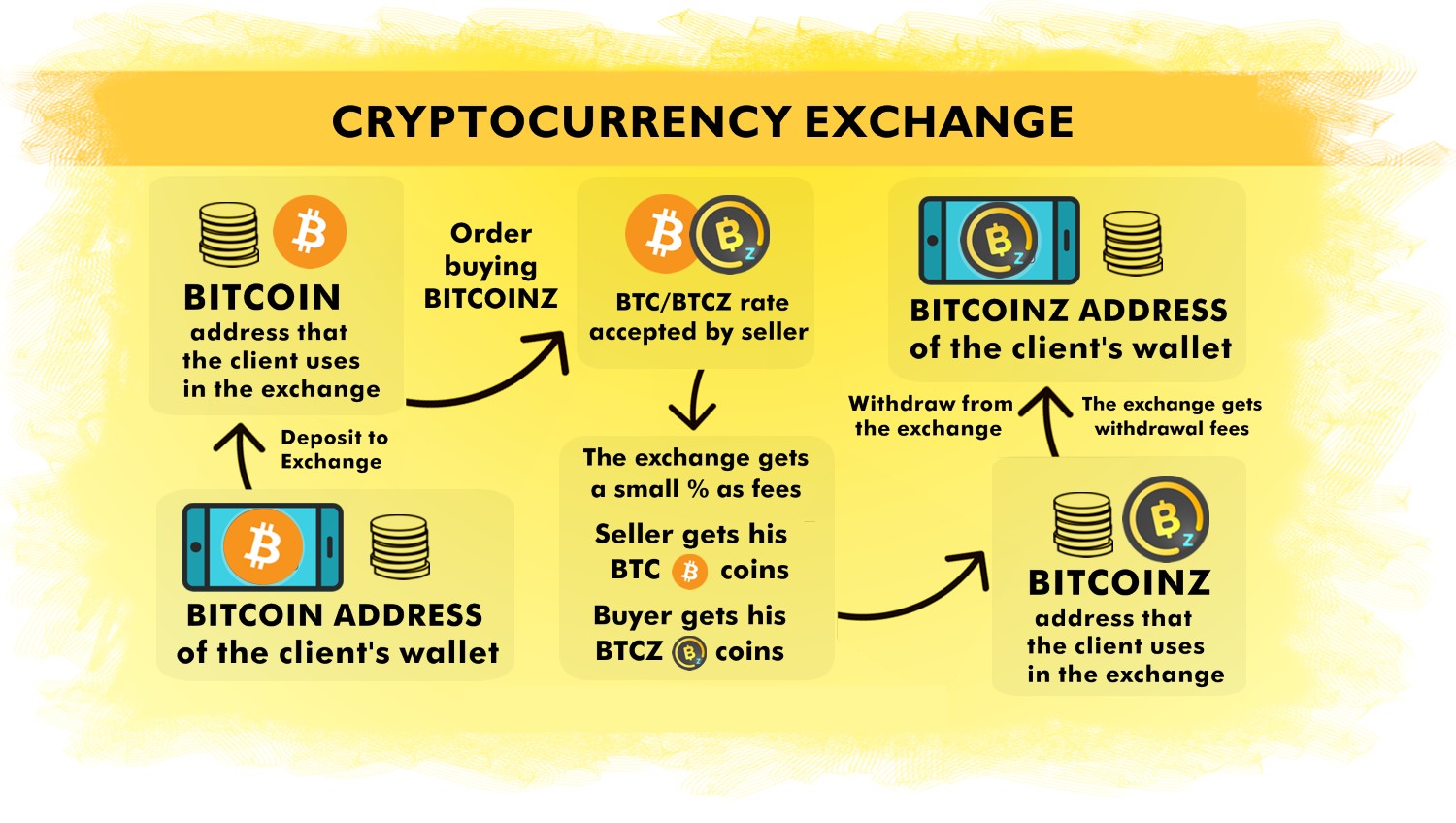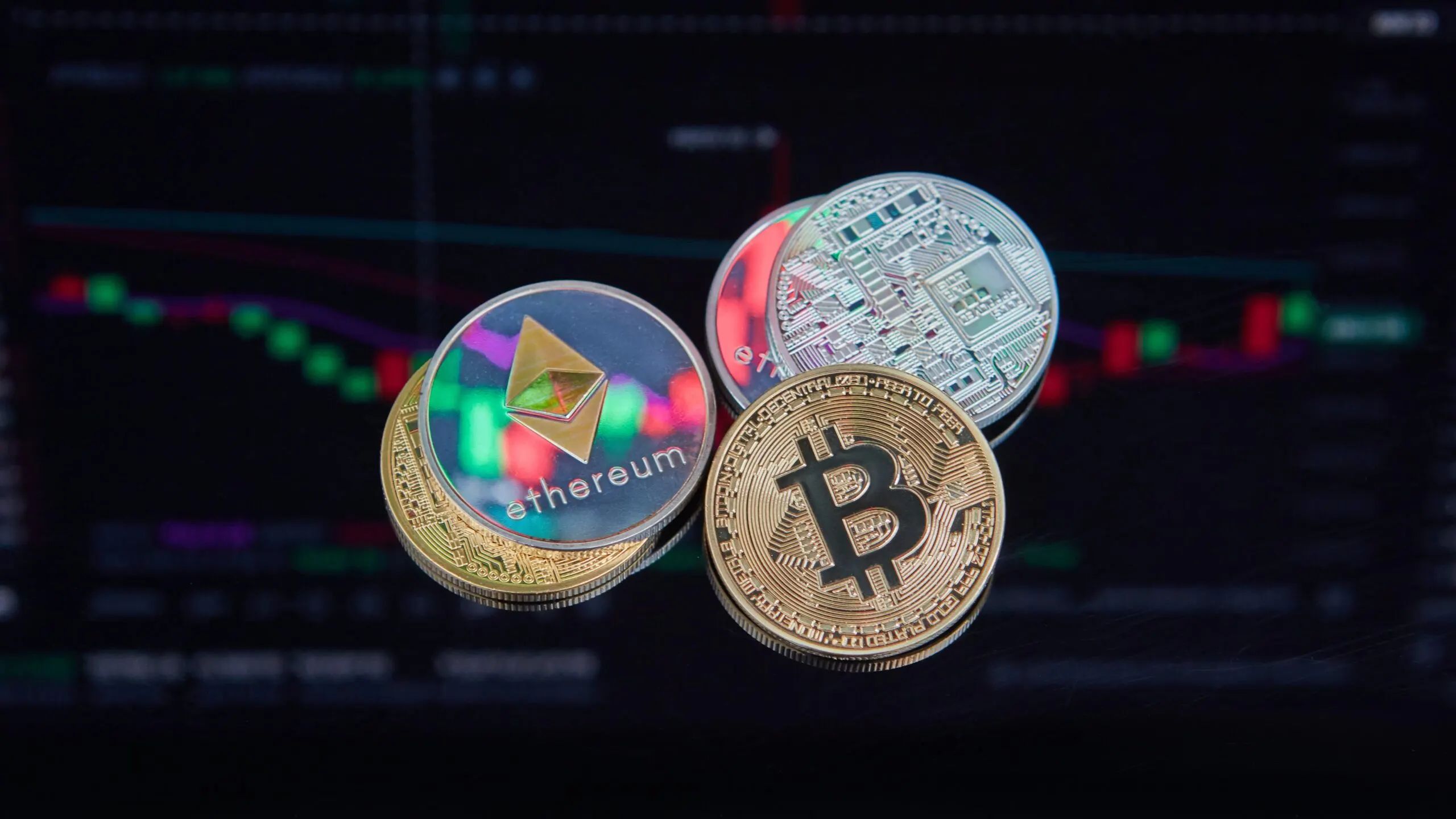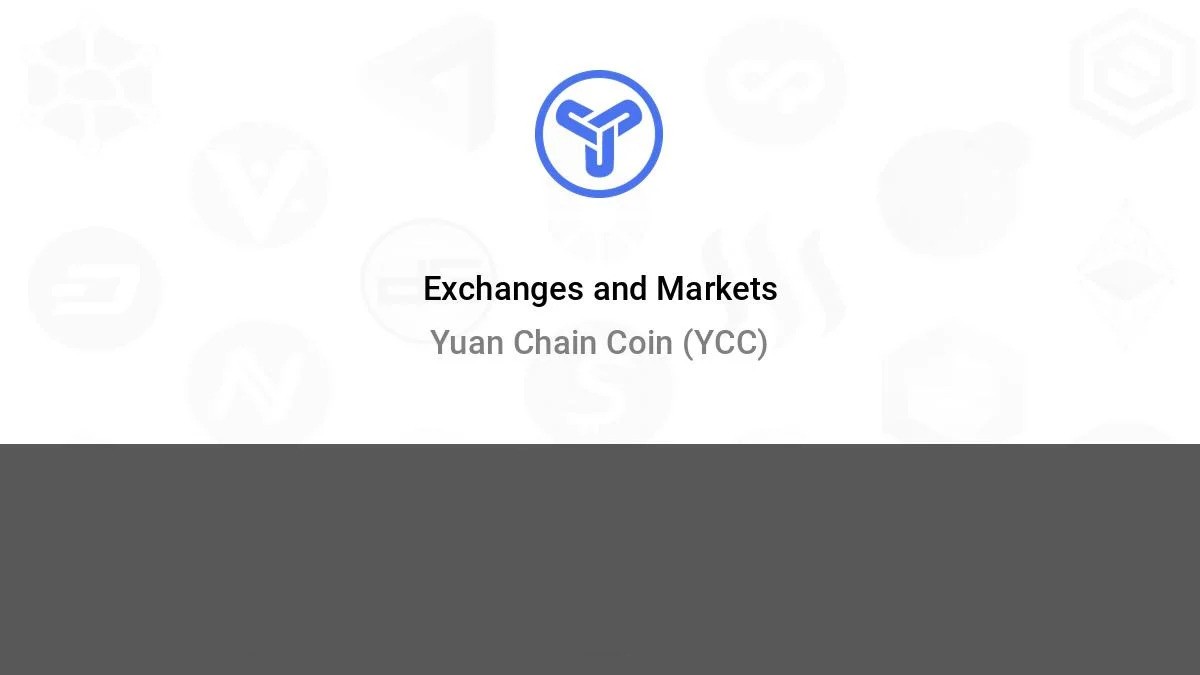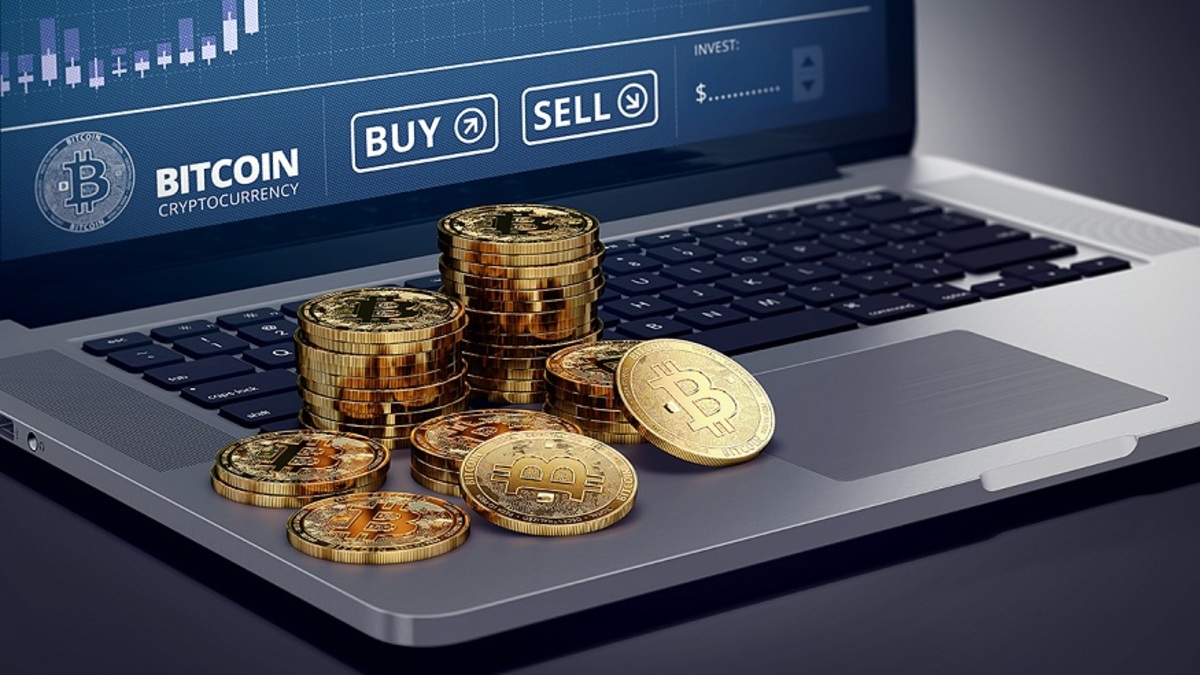What Is a Cryptocurrency Exchange?
A cryptocurrency exchange is a digital platform that allows individuals to buy, sell, and trade cryptocurrencies. It serves as a marketplace where participants can exchange one cryptocurrency for another or trade cryptocurrency for fiat currency, such as US dollars or Euros. These exchanges act as intermediaries, facilitating transactions between buyers and sellers.
Cryptocurrency exchanges provide a user-friendly interface that allows individuals to create accounts, deposit funds, and place orders to buy or sell cryptocurrencies. They act as a bridge between users, matching buy and sell orders and executing trades securely.
Unlike traditional stock exchanges, cryptocurrency exchanges operate 24/7, providing constant access to the digital currency market. They enable users to take advantage of price fluctuations and seize investment opportunities as they arise.
To use a cryptocurrency exchange, individuals typically need to go through a registration process that involves providing personal information and verifying their identity. Once registered, users can deposit funds into their exchange accounts, which they can then use to buy or sell cryptocurrencies.
Some cryptocurrency exchanges also offer advanced features, such as margin trading, where users can borrow funds to trade with leverage. Margin trading allows investors to amplify their potential profits, but it also carries higher risks. It is essential to understand the risks involved before engaging in margin trading.
Overall, cryptocurrency exchanges play a crucial role in the cryptocurrency market, offering a convenient and secure platform for buying, selling, and trading digital assets. They provide individuals with the opportunity to participate in the exciting world of cryptocurrencies and potentially generate profits through their investments.
How Does a Cryptocurrency Exchange Work?
A cryptocurrency exchange operates as an online platform where users can trade various cryptocurrencies. Understanding how these exchanges work is essential for anyone looking to participate in the cryptocurrency market.
The first step in using a cryptocurrency exchange is to create an account. This typically involves providing personal information and verifying your identity. Once your account is set up, you can deposit funds into it. Most exchanges support various deposit methods, including bank transfers and credit/debit card payments.
Once your funds are deposited, you can start trading. Cryptocurrency exchanges offer a user-friendly interface that allows you to place orders to buy or sell cryptocurrencies. There are two common types of orders: market orders and limit orders.
A market order executes a trade immediately at the current market price. This type of order is useful when you want to buy or sell a cryptocurrency quickly without specifying a specific price.
A limit order, on the other hand, allows you to set a specific price at which you want to buy or sell a cryptocurrency. Your order will only be executed if the market reaches your specified price.
When a buy order matches with a sell order at the specified price, a trade is executed. The exchange deducts transaction fees from both the buyer and seller’s accounts. These fees can vary depending on the exchange and the volume of the transaction.
After a trade is executed, the cryptocurrency you purchased will be added to your exchange account balance. You can choose to keep the cryptocurrency in your exchange wallet or transfer it to an external wallet for added security. Many individuals prefer to store their cryptocurrencies in external wallets, which provide more control over their digital assets.
In addition to trading, cryptocurrency exchanges often provide other features, such as charts and market data, to help users make informed investment decisions. Some exchanges also offer advanced trading options like margin trading and futures contracts, which allow users to speculate on cryptocurrency price movements with leverage.
It is important to note that different exchanges may have different features, fees, and security measures. It is crucial to thoroughly research and choose a reputable exchange that aligns with your trading needs and provides adequate security measures to protect your funds.
Overall, cryptocurrency exchanges act as intermediaries, facilitating the buying, selling, and trading of cryptocurrencies. By understanding how these exchanges operate, you can effectively navigate the cryptocurrency market and participate in this exciting digital asset class.
Types of Cryptocurrency Exchanges
Cryptocurrency exchanges come in various forms, each with its own characteristics and advantages. Understanding the different types of exchanges will help you choose the right one that suits your trading needs. Here are the three main types of cryptocurrency exchanges:
- 1. Centralized Cryptocurrency Exchanges: These are the most common type of exchanges and are operated by a central authority. Centralized exchanges act as intermediaries between buyers and sellers, keeping custody of users’ funds. They facilitate the matching of buy and sell orders and execute trades on behalf of users. While centralized exchanges offer convenience and liquidity, they also pose higher risks due to their centralized nature. Users must trust the exchange to securely handle their funds and protect their personal information.
- 2. Decentralized Cryptocurrency Exchanges: In contrast to centralized exchanges, decentralized exchanges (DEXs) operate on a peer-to-peer network. They allow users to trade directly without the need for an intermediary. DEXs typically use blockchain technology to facilitate transactions and maintain a high level of security and transparency. Users have complete control over their funds since they are stored in personal wallets. However, DEXs often have lower liquidity and limited trading pairs compared to centralized exchanges.
- 3. Hybrid Cryptocurrency Exchanges: Hybrid exchanges aim to combine the best features of both centralized and decentralized exchanges. They offer the convenience and liquidity of centralized exchanges while providing users with control over their funds through the use of smart contracts and decentralized technology. Hybrid exchanges can enhance security by reducing the reliance on a centralized authority, but they may still require users to trust certain aspects of the exchange’s operations.
It’s important to consider the pros and cons of each type of exchange before deciding which one to use. Factors such as security, liquidity, user-friendliness, and available trading pairs should be taken into account. Conducting thorough research and reading user reviews can help you assess the reputation and reliability of different exchanges.
Additionally, it’s worth noting that new types of exchanges and innovative approaches to cryptocurrency trading are continuously emerging in this rapidly evolving industry. For instance, decentralized finance (DeFi) platforms are gaining popularity, offering decentralized exchanges, yield farming, and lending protocols.
By understanding the different types of cryptocurrency exchanges and staying informed about the latest developments in the industry, you can make informed decisions and navigate the cryptocurrency market more effectively.
Centralized Cryptocurrency Exchanges
Centralized cryptocurrency exchanges are the most common and widely used type of exchange in the digital currency market. These exchanges operate with a central authority that facilitates the buying, selling, and trading of cryptocurrencies. Here’s what you need to know about centralized exchanges:
1. Convenience and Liquidity: Centralized exchanges offer a high level of convenience and liquidity. They provide a user-friendly interface that makes it easy for individuals to create accounts, deposit funds, and place orders. These exchanges typically support a wide range of trading pairs and have a large number of participants, resulting in higher liquidity and faster execution of trades.
2. Security Measures: Centralized exchanges generally implement security measures to protect users’ funds and personal information. They employ measures like two-factor authentication (2FA), encryption, and cold storage for storing funds offline to mitigate the risk of hacks and theft. However, it’s important to note that centralized exchanges are still vulnerable to hacking attacks, so users must be cautious and take additional security measures.
3. Custodial Wallets: Centralized exchanges typically require users to deposit their funds into custodial wallets managed by the exchange. While this provides convenience, it means that users do not have complete control over their funds. They must trust the exchange to securely handle their assets. It’s advisable to only keep funds on an exchange that you intend to trade and store the majority of your cryptocurrency holdings in a personal wallet for added security.
4. Know Your Customer (KYC) Requirements: Centralized exchanges adhere to Know Your Customer (KYC) regulations, which require users to provide personal information and verify their identity. This helps prevent fraudulent activities and ensures compliance with applicable laws and regulations. KYC procedures may involve submitting identification documents and providing proof of address.
5. Fees: Centralized exchanges charge fees for executing trades. These fees typically vary based on the trading volume and the type of order (market or limit). It’s important to consider the fee structure of each exchange, as high fees can significantly impact your trading profits.
Despite their advantages, centralized exchanges also have some drawbacks. These include a potential single point of failure, as they rely on a central authority, and the risk of insider trading or manipulation. Additionally, centralized exchanges are subject to regulatory oversight, and the availability of certain features and services may vary depending on the jurisdiction in which they operate.
Examples of popular centralized cryptocurrency exchanges include Coinbase, Binance, and Kraken. When choosing a centralized exchange, it’s important to consider factors like reputation, security measures, available trading pairs, fees, and user reviews.
Overall, centralized cryptocurrency exchanges play a vital role in the cryptocurrency ecosystem, providing a convenient and accessible platform for individuals to engage in crypto trading. However, it is essential to be aware of the risks involved and take appropriate measures to protect your funds and personal information.
Decentralized Cryptocurrency Exchanges
Decentralized cryptocurrency exchanges (DEXs) are a type of exchange that operate on a peer-to-peer (P2P) network without the need for a central authority to facilitate transactions. These exchanges offer unique features and benefits that distinguish them from centralized exchanges:
1. Peer-to-Peer Trading: DEXs allow users to trade cryptocurrencies directly with each other, removing the need for an intermediary. This is made possible through the use of smart contracts and blockchain technology. The decentralized nature of these exchanges ensures that transactions are executed without the need for a central party controlling the funds.
2. Enhanced Privacy and Security: Decentralized exchanges prioritize user privacy and security. Since trades occur directly between buyer and seller wallets, there is no need to provide personal information or undergo Know Your Customer (KYC) verification. Users maintain control over their funds and are not exposed to the risks associated with centralized custodial wallets. Additionally, DEXs are resistant to hacking attacks targeting centralized infrastructure.
3. Transparency and Trust: DEXs leverage the transparency of blockchain technology, allowing users to monitor transactions and verify the integrity of the trading process. This increases trust and reduces the risk of fraudulent activities or manipulation.
4. User Control: In decentralized exchanges, users retain control over their private keys and funds. This means that you are solely responsible for the security of your assets. It is crucial to use secure wallets and follow best practices for wallet management to prevent the loss or theft of your cryptocurrencies.
5. Limited Trading Pairs and Liquidity: Despite their benefits, DEXs may have lower liquidity compared to centralized exchanges, which can result in limited trading pairs and potentially higher slippage. However, the growing popularity of DEXs has led to the development of innovative solutions to address liquidity challenges, such as decentralized liquidity protocols.
Examples of popular decentralized exchanges include Uniswap, SushiSwap, and PancakeSwap. These platforms enable users to trade tokens based on various blockchain networks, such as Ethereum and Binance Smart Chain.
It’s important to note that while decentralized exchanges offer enhanced privacy and security, they may present some challenges compared to centralized exchanges. These challenges include a steeper learning curve, slower transaction times due to blockchain confirmation, and potential limitations regarding trading volume and order types.
As the cryptocurrency industry continues to evolve, decentralized exchanges are playing a crucial role in promoting the original vision of cryptocurrencies: decentralization, privacy, and transparency. If you prioritize control over your funds and value the principles of decentralization, a decentralized exchange may be a suitable choice for your cryptocurrency trading needs.
Hybrid Cryptocurrency Exchanges
Hybrid cryptocurrency exchanges combine the features of both centralized and decentralized exchanges, offering users a unique trading experience. These exchanges aim to leverage the advantages of both types and address their respective limitations. Here’s what you should know about hybrid exchanges:
1. Centralized and Decentralized Features: Hybrid exchanges seek to provide the convenience and liquidity of centralized exchanges while incorporating decentralized elements like user-controlled wallets and smart contract technology. This allows users to enjoy the benefits of a centralized platform while maintaining control over their funds.
2. Security and Privacy: Hybrid exchanges prioritize security by employing encryption and other data protection measures. Users retain control of their private keys, ensuring that their funds are not entrusted to a centralized authority. This enhances privacy and reduces the risk of potential hacks or thefts.
3. Flexibility and Innovation: Hybrid exchanges often introduce innovative features and services to differentiate themselves in the competitive cryptocurrency market. These can include advanced trading options, improved user interfaces, or integration with decentralized finance (DeFi) protocols.
4. Regulatory Compliance: Hybrid exchanges typically adhere to applicable regulatory requirements, such as Know Your Customer (KYC) and Anti-Money Laundering (AML) regulations. By implementing these measures, hybrid exchanges provide a more compliant environment for users who prefer or require regulated platforms.
5. Trade Execution: Hybrid exchanges can employ various methods for trade execution. They may utilize centralized order matching engines to enhance speed and liquidity, while incorporating decentralized smart contracts for transparent and secure settlement of trades.
It’s important to research and assess the hybrid exchange you are considering, taking into account factors such as security measures, fees, available trading pairs, user reviews, and the level of decentralization. Additionally, consider the reputation and track record of the exchange to ensure reliability and trustworthiness.
Examples of hybrid exchanges include Binance, which initially operated as a centralized exchange and later introduced decentralized elements with the launch of Binance DEX, and BitShares, a platform that combines centralization and decentralization to enable fast and secure trading.
Hybrid exchanges provide users with a flexible and customizable trading experience, catering to both those who value convenience and liquidity and those who prioritize control over their funds. By combining elements from centralized and decentralized exchanges, hybrid platforms aim to meet the evolving demands of cryptocurrency traders.
Popular Cryptocurrency Exchanges
The cryptocurrency market is flooded with numerous exchanges, each offering unique features and services. Here are some of the popular exchanges that have gained significant traction among cryptocurrency traders:
1. Coinbase: Coinbase is one of the most widely recognized cryptocurrency exchanges in the world. It offers a user-friendly interface, making it a popular choice for beginners. Coinbase supports a variety of cryptocurrencies and provides features like recurring buys and a secure wallet for storing digital assets.
2. Binance: Binance is known for its extensive selection of cryptocurrencies and competitive trading fees. The exchange caters to both beginners and advanced traders, offering a user-friendly interface and advanced trading options. Binance also operates Binance Chain, a blockchain platform that provides decentralized exchange services.
3. Kraken: Kraken is a well-established exchange that offers a wide range of trading pairs and advanced trading features. It is known for its robust security measures, including cold storage and strong verification processes. Kraken also provides access to margin trading and futures contracts.
4. Bitfinex: Bitfinex is a popular exchange known for its advanced trading features, such as margin trading and lending. It offers a wide range of cryptocurrencies and liquidity across various trading pairs. Bitfinex also provides users with access to advanced charting tools and customizable trading interfaces.
5. Gemini: Gemini is a regulated cryptocurrency exchange that places a strong emphasis on security and compliance. It offers a user-friendly interface, supports a variety of cryptocurrencies, and provides features like recurring buys and a secure cold storage system. Gemini is also known for its strong regulatory compliance measures and adherence to industry standards.
6. Huobi Global: Huobi Global is one of the largest cryptocurrency exchanges by trading volume. It offers a diverse selection of cryptocurrencies and trading pairs, catering to traders of all levels. Huobi Global provides features like spot trading, futures trading, and options contracts, as well as various trading tools and analytics.
7. KuCoin: KuCoin is a global cryptocurrency exchange that offers a wide range of trading pairs and a user-friendly interface. It provides features like spot trading, margin trading, and futures contracts. KuCoin also has its native token, KuCoin Shares (KCS), which allows users to earn passive income through the exchange’s profit-sharing program.
8. CoinEx: CoinEx is a cryptocurrency exchange that focuses on providing a seamless trading experience and a wide range of trading pairs. It offers spot trading, futures contracts, and various trading tools. CoinEx is also known for its user-friendly interface and low trading fees.
These are just a few examples of the many popular cryptocurrency exchanges available in the market. When choosing an exchange, consider factors such as security measures, available trading pairs, liquidity, fees, user interface, and the reputation of the exchange. It’s important to conduct thorough research and opt for exchanges that align with your trading preferences and requirements.
Keep in mind that the cryptocurrency market is dynamic, and new exchanges frequently emerge. Stay updated with the latest developments to explore and evaluate new options that may better suit your needs.
Factors to Consider When Choosing a Cryptocurrency Exchange
Choosing the right cryptocurrency exchange is essential to ensure a secure and seamless trading experience. With numerous options available, here are some key factors to consider when selecting a cryptocurrency exchange:
1. Security: Security should be a top priority when choosing an exchange. Look for exchanges that implement robust security measures such as two-factor authentication (2FA), cold storage of funds, and encryption protocols. Additionally, consider the exchange’s track record regarding past security incidents and their response to such events.
2. Reputation and Trustworthiness: Research the reputation of the exchange within the cryptocurrency community. Read user reviews and look for feedback regarding the exchange’s reliability, customer support, and transparency. Consider exchanges that have been operating for a significant period and have built a strong track record of trust.
3. Supported Cryptocurrencies: Ensure that the exchange supports the cryptocurrencies you intend to trade. Different exchanges offer varying selections of cryptocurrencies. If you have specific altcoins in mind, make sure they are listed on the exchange you plan to use.
4. Liquidity: Liquidity is crucial for efficient trading. Higher liquidity means there is a greater chance of finding buyers or sellers for your trades, resulting in faster transactions and potentially better prices. Exchanges with higher trading volumes usually offer greater liquidity.
5. User Interface and Experience: Consider the user interface and experience offered by the exchange. Look for exchanges that provide intuitive platforms, easy navigation, and comprehensive charting tools. A user-friendly interface contributes to a smoother trading experience.
6. Fees and Costs: Examine the fee structure of the exchange. Different exchanges have varying fee models, such as transaction fees, deposit and withdrawal fees, and trading fees. Compare the fees of different exchanges to find the most cost-effective option for your trading needs.
7. Customer Support: Reliable customer support is crucial when dealing with technical issues, account-related inquiries, or dispute resolution. Assess the responsiveness and quality of customer support provided by the exchange. Look for exchanges that offer multiple channels of communication and have a reputation for prompt and helpful responses.
8. Regulatory Compliance: Consider whether the exchange adheres to regulatory requirements. Exchanges that comply with Know Your Customer (KYC) and Anti-Money Laundering (AML) regulations provide an added layer of assurance and credibility.
9. Geographic Restrictions: Some exchanges have geographic restrictions and may not offer services in certain jurisdictions. Ensure that the exchange you choose operates in your country or region and complies with local regulations.
10. Ease of Deposit and Withdrawal: Examine the deposit and withdrawal options provided by the exchange. Look for exchanges that support convenient funding methods, such as bank transfers, credit/debit cards, or popular payment processors. Also, consider the withdrawal process and any associated fees.
These factors should guide your decision when selecting a cryptocurrency exchange. It’s crucial to conduct thorough research, compare different options, and read user reviews to make an informed choice that meets your trading requirements and aligns with your preferences.
Security Measures of Cryptocurrency Exchanges
Ensuring the security of your funds and personal information is paramount when choosing a cryptocurrency exchange. Here are some key security measures that reputable exchanges implement to protect user assets:
1. Two-Factor Authentication (2FA): Two-Factor Authentication adds an extra layer of security by requiring users to provide a second form of verification in addition to their password. This can be in the form of a unique code generated by a mobile app or received via SMS. Enabling 2FA significantly reduces the risk of unauthorized access to your account.
2. Cold Storage: Cold storage is the practice of keeping cryptocurrency funds offline, away from internet connectivity. Exchanges use cold storage to store a significant portion of user funds, keeping them safe from online hacking attempts. Cold storage methods include hardware wallets, paper wallets, and offline servers.
3. Encryption: Exchanges employ encryption techniques to secure communication and data transmission. Data encryption ensures that sensitive information such as passwords and private keys are protected from unauthorized access. Look for exchanges that use industry-standard encryption protocols, such as SSL/TLS, to secure their platforms.
4. Multi-Signature Wallets: Multi-Signature (Multi-Sig) wallets require multiple private keys to authorize transactions. This adds an extra layer of security since an attacker would need to compromise multiple keys to gain access to funds. Exchanges often use Multi-Sig wallets to safeguard users’ assets.
5. Security Audits and Penetration Testing: Reputable exchanges regularly conduct security audits and engage in penetration testing to identify and address potential vulnerabilities in their systems. These assessments are performed by third-party cybersecurity firms and help ensure that the exchange’s security measures are up to date and effective.
6. Continuous Monitoring: Exchanges employ dedicated security teams to monitor their platforms for any suspicious activity or potential threats. They use real-time monitoring tools and anomaly detection techniques to identify and mitigate security risks promptly.
7. Account Security Features: Exchanges provide features to enhance account security, such as allowing users to set withdrawal whitelist addresses, enabling email/SMS notifications for account activities, and providing account activity history and login history logs. These features enable users to track and verify their account activities and detect any unauthorized access.
8. Regulatory Compliance and KYC Procedures: Exchanges that adhere to Know Your Customer (KYC) and Anti-Money Laundering (AML) regulations are likely to have stronger security measures in place. These measures include verifying user identities, monitoring transactions for suspicious activity, and complying with legal and regulatory requirements.
9. Insurance Coverage: Some exchanges offer insurance coverage to protect user funds in the event of a security breach or hacking incident. Insurance coverage provides an added layer of protection and can help reimburse users in case of a significant loss due to unforeseen circumstances.
10. Ongoing Improvements: Reputable exchanges are committed to continuous security improvements. They actively collaborate with the community, bug bounty programs, and security experts to identify potential vulnerabilities and enhance their security protocols.
While exchanges take significant measures to secure user funds, it’s important to note that no system is entirely foolproof. As a user, it’s essential to follow best security practices yourself, such as using strong and unique passwords, enabling 2FA, and regularly updating your software and antivirus programs.
Prioritize exchanges that prioritize security and implement robust security measures, as this significantly reduces the risks associated with using a cryptocurrency exchange.
Steps to Start Trading on a Cryptocurrency Exchange
If you’re new to cryptocurrency trading and want to start trading on a cryptocurrency exchange, follow these steps to get started:
1. Choose a Reliable Exchange: Research and choose a reputable cryptocurrency exchange that aligns with your trading needs and offers a user-friendly interface. Look for exchanges with strong security measures, a wide selection of cryptocurrencies, and positive user reviews.
2. Sign Up and Verify Your Account: Create an account on the chosen exchange by providing the necessary information. This usually includes a valid email address, a secure password, and, in some cases, a verification of identity through a Know Your Customer (KYC) process.
3. Secure Your Account: Enable two-factor authentication (2FA) to add an extra layer of security to your account. It typically involves downloading a 2FA app or receiving verification codes through SMS.
4. Deposit Funds: Deposit funds into your exchange account. Depending on the exchange, you can deposit fiat currency (e.g., USD, EUR) or cryptocurrencies (e.g., Bitcoin, Ethereum) into your account. Follow the instructions provided by the exchange to initiate the deposit.
5. Understand Trading pairs and Market Orders: Familiarize yourself with the concept of trading pairs. Cryptocurrency trades happen between two assets, typically represented as BTC/USD, ETH/BTC, etc. Learn the difference between market orders (buying or selling at the current market price) and limit orders (buying or selling at a specific price).
6. Place Your Order: Choose the trading pair you wish to trade and enter the details of your trade, such as the amount, price, and type of order (market or limit). Check the order details carefully before confirming the trade.
7. Monitor the Market: Keep an eye on the market and track the performance of your trades. Cryptocurrency prices can be highly volatile, so it’s essential to stay updated with market trends and news that could impact your investments.
8. Set Stop Loss and Take Profit Levels: Consider setting stop loss and take profit levels for your trades. A stop loss order automatically sells your assets if the price falls below a certain level, limiting potential losses. A take profit order automatically sells your assets if the price reaches a specified level, securing potential profits.
9. Withdraw Your Funds: If you want to move your funds out of the exchange, initiate a withdrawal to send your cryptocurrencies to an external wallet or withdraw your fiat currency. Follow the exchange’s instructions and consider the transaction fees and processing times associated with the withdrawal.
10. Stay Informed and Learn: Cryptocurrency trading is an evolving industry. Stay informed about market trends, read up on trading strategies, and continue learning about blockchain technology and cryptocurrencies to improve your trading skills over time.
Note that the specifics of each exchange can vary, so carefully read and familiarize yourself with the platform’s user guides, documentation, and trading rules before proceeding with your trades.
Remember to start with small amounts and gradually increase your trading positions as you gain experience and confidence in the volatile cryptocurrency market.
Benefits and Risks of Using Cryptocurrency Exchanges
Using cryptocurrency exchanges offers both benefits and risks that individuals should consider before engaging in trading activities. Here are some of the key advantages and potential risks associated with using cryptocurrency exchanges:
Benefits:
- Access to a Variety of Cryptocurrencies: Cryptocurrency exchanges provide access to a wide range of cryptocurrencies, allowing individuals to diversify their investment portfolios and take advantage of various opportunities.
- Liquidity: Exchanges facilitate liquidity in the cryptocurrency market, enabling traders to quickly buy or sell their digital assets at competitive prices.
- Convenience: Cryptocurrency exchanges offer convenient platforms that allow users to trade from anywhere at any time, providing flexibility and accessibility.
- Trading Options: Many exchanges offer advanced trading options, such as margin trading, futures contracts, and options trading, allowing users to utilize leverage and potentially amplify their profits.
- Market Information: Exchanges often provide access to real-time market data, charts, and analysis tools, helping traders make informed decisions and analyze market trends.
- Opportunity for Profit: Cryptocurrency trading has the potential for significant profits due to the volatile nature of the market. Traders can take advantage of price movements to generate returns.
Risks:
- Volatility: Cryptocurrencies are known for their price volatility. Fluctuations in prices can lead to both substantial gains and losses for traders, potentially exposing them to financial risks.
- Security Threats: While exchanges implement security measures, there is always a risk of security breaches, hacks, and theft. Users must be cautious about storing funds on exchanges and employ additional security measures, such as using hardware wallets and following best practices.
- Regulatory Risks: The regulatory landscape around cryptocurrencies is evolving. Changes in regulations or legal actions could impact the operation of exchanges and affect users’ ability to trade or access their funds.
- Limited Control: When using exchanges, users entrust custodial control of their funds to a centralized authority. This limits their control over their assets, making them reliant on the exchange’s security measures and operational practices.
- Technical Issues: Technical issues such as system failures, platform downtime, or transaction delays can occur on exchanges. These issues may prevent users from executing trades or accessing their funds in a timely manner.
- Scams and Phishing: The cryptocurrency industry has seen its share of scams and phishing attempts. Users should exercise caution and be vigilant to avoid falling victim to fraudulent schemes.
It’s crucial for individuals to assess and understand these benefits and risks before engaging in cryptocurrency trading. Conducting thorough research, carefully choosing reputable exchanges, practicing proper security measures, and staying informed about market trends can help mitigate risks and increase the likelihood of a successful trading experience.
Conclusion
Cryptocurrency exchanges play a vital role in the digital currency ecosystem, enabling individuals to buy, sell, and trade cryptocurrencies. As you consider venturing into cryptocurrency trading, it’s important to be aware of the key aspects discussed throughout this article.
Understanding the different types of exchanges is crucial. Centralized exchanges provide convenience and liquidity but require users to trust the platform with their funds. In contrast, decentralized exchanges prioritize user control and privacy by operating on a peer-to-peer network. Hybrid exchanges aim to combine the advantages of both centralized and decentralized exchanges.
Factors such as security measures, reputation, supported cryptocurrencies, liquidity, and user experience should be carefully considered when choosing an exchange. It’s prudent to prioritize security and select exchanges that employ robust security measures, such as two-factor authentication, cold storage, and encryption.
Starting your cryptocurrency trading journey involves creating an account, depositing funds, understanding trading pairs and order types, and monitoring the market. Strategic decisions, such as setting stop loss and take profit levels, can help manage risk and maximize potential profits.
While using cryptocurrency exchanges provides several benefits, including access to various cryptocurrencies, liquidity, and trading flexibility, it’s essential to be aware of the associated risks. Price volatility, security threats, regulatory changes, limited control, technical issues, and scams are potential risks that traders must address.
By conducting thorough research, staying informed, and adopting best security practices, you can navigate the cryptocurrency market more effectively and reduce the risks involved. Remember to start with small investments and gradually increase your trading positions as you gain experience and confidence.
Ultimately, the cryptocurrency market offers a dynamic and exciting landscape for traders, with potential opportunities for profits. Approach trading with caution, stay educated, and adapt to market conditions to increase your chances of success in this ever-evolving industry.

























